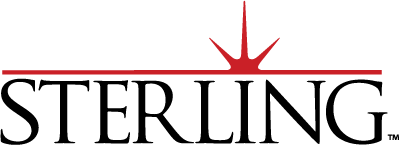By Davina Armstrong-Cruz, Sterling Senior Technical Architect
Master Specialist – Digital Workspace
End User Computing (EUC) has been around for years, but has been rebranded to reflect the modern age, such as ‘Anywhere Workspace’ and ‘Modern Workplace.’ In the end, all of these encompass user access to enterprise applications and data, anywhere and anytime. EUC is things like accessing your work email, sharing documents with colleagues, having multi-factor authentication and much more. In this blog we’ll be focusing on VMware’s Anywhere Workspace Strategy that encompasses VMware Horizon and VMware Workspace ONE.
The Covid pandemic was an ‘anywhere workspace’ accelerant. Users needed to work from anywhere, on any device, but also needed to do so securely and seamlessly. IT needed to quickly adapt to and serve a suddenly massive remote workforce. From that inadvertent distributed-workspace revolution emerged the necessity of leveraging technologies like VDI [Virtual Desktop Infrastructure] and UEM [Unified End-Point Management].
When people hear “VDI,” they typically think of an outdated virtual-desktop stream, but that isn’t the case. VDI is a popular tool because you can deploy it on-prem(ises), from the cloud, or even use it in a hybrid model. It has become a seamless and resilient desktop that provides continuity for the user on any device they choose. VMware Horizon, with its two variations —Horizon 8 and Horizon Cloud — is a great example of such a VDI environment. IT data centers provide virtual desktops and applications, like VMware Horizon, to their employee end-users as a managed service.
Using VMware Horizon Cloud, IT staff can manage their enterprise’s environment from the cloud. Horizon Cloud’s Universal Console efficiently deploys, manages, monitors, and scales an enterprise’s desktops and apps across multi-cloud platforms. Managing on-prem environments through the Horizon Universal Console requires simply installing the cloud connector into each environment. All virtual desktops and applications can be automated and managed, delivering the modern operations and personalization end-users require. Users are empowered to work from any device that has a consistent, personalized desktop, and application. For greater resiliency, an enterprise’s VDI can be easily scaled across private and public clouds.
The digital workspace is transforming entire industries by improving the employee experience, embracing modern management and automating everything. Users want to be empowered to choose their preferred work devices. But managing multi-platform endpoints had always been a major IT pain. (There has always existed that one and only user in a workplace who does everything on a Mac. Their application-management? That’s on them).
But the distributed workspace has pushed the boundaries and transformed the way we manage multi-platform endpoints, and it has truly empowered the user to choose what device suits them best (even ones not developed yet). VMware created a digital workspace called Workspace ONE Unified Endpoint Management. With Workspace ONE, IT can transform how they manage multi-platform endpoints, how users access applications, and create intelligent automation workflows while providing enterprise customization and further security control.
Working from wherever the situation calls for it is here. Sterling is here to help your organization adapt and upgrade your systems to any environment. We’ve invested engineering time and effort into acquiring competency on these technologies, earning the required manufacturer certifications to provide you with the best VDI and EUC solutions — and as quickly as possible. Contact us to realize your IT modernization.
In Pt. 2 of this blog, we will go over Workspace ONE’s features and architecture. Stay tuned!

